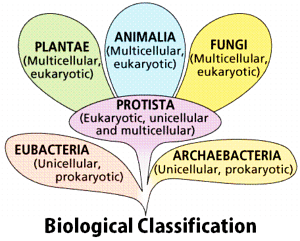Question:
An example for symbiotic bacteria
An example for symbiotic bacteria
Updated On: Jun 15, 2022
- Erwinia amylovora
- Rhizobium leguminosarum
- Xanthomonas campestris
- Agrobacterium tumefaciens
Hide Solution
Verified By Collegedunia
The Correct Option is B
Solution and Explanation
Rhizobium leguminosarum is a small, flagellate gram-negative, aerobic, rod- shaped bacteria. It persists saprophytically in the soil until it infects a root hair or damaged epidermal cell. After infection, Rhizobium establishes a symbiotic relationship with legumes living inside the root nodules and fixes large amount of nitrogen, much of which his made available to the plant.
Was this answer helpful?
0
0
Top Questions on biological classification
- Red Data Book describes
- WBJEE JENPAS UG - 2022
- Biology
- biological classification
- Which of the following statements is correct?
- NEET (UG) - 2021
- Biology
- biological classification
- Match the compounds of Column I with their functions in Column II.
Column I Column II 1. Trypsin p. Fights infectious agents 2. GLUT - 4 q. Is an intercellular ground substance 3. Collagen r. Works as an enzyme 4. Antibody s. Enables glucose transport into cells - KCET - 2021
- Biology
- biological classification
- Match the organisms in column-I with habitats in column-II Select the correct answer from the options given below :-
- NEET (UG) - 2019
- Biology
- biological classification
- Match Column - I with Column - II.
Column - I Column - II Saprophyte - Symbiotic association of fungi with plant roots Parasite - Decomposition of dead organic materials Lichens - Living on living plants or animals Mycorrhiza - Symbiotic association of algae and fungi Choose the correct answer from the options given below :- NEET (UG) - 2019
- Biology
- biological classification
View More Questions
Questions Asked in NEET exam
- A chemical reaction proceeds into the following steps Step I,$\hspace15mm 2A \rightleftharpoons X$ fast Step II,$\hspace10mm X + B \rightleftharpoons Y$ slow Step III,$\hspace10mm Y + B \rightleftharpoons $ Product fast The law for the overall reaction is
- Delhi UMET/DPMT - 2011
- Chemical Kinetics
- A solution is $0.1 M$ with respect to $Ag ^{+}, Ca ^{2+}, Mg ^{2+}$ and $Al ^{3+}$, which will precipitate at lowest concentration of $\left[ PO _{4}^{3-}\right]$ when solution of $Na _{3} PO _{4}$ is added?
- Delhi UMET/DPMT - 2011
- Equilibrium
- How many $ 1\,\mu F $ capacitors must be connected in parallel to store a charge of $1\, C$ with a potential of $110\, V$ across the capacitors?
- Delhi UMET/DPMT - 2011
- electrostatic potential and capacitance
- Most stable carbocation is
- Delhi UMET/DPMT - 2011
- Organic Chemistry- Some Basic Principles and Techniques
- Given a gas phase reaction, $\hspace10mm 2A(g)+B(g) \rightleftharpoons C(g)+D(g)$ Which one of the following changes will affect the value of $K_c$?
- Delhi UMET/DPMT - 2011
- Equilibrium
View More Questions
Concepts Used:
Biological Classification
The process of grouping living organisms into categories is called biological classification. The most modern 5-kingdom classification was put ahead by an eminent scientist R.H.Whittaker. The five-kingdom classification is based on the criteria like cell structure, mode of nutrition, body form, and reproduction. One of the most important characteristics of this system is that it follows the evolutionary sequence of living organisms. The organisms are classified into distinct taxa or levels like Kingdom, Phylum, Division, Class, Order, Family, Genus, and Species. The 5 kingdoms are as follows:




